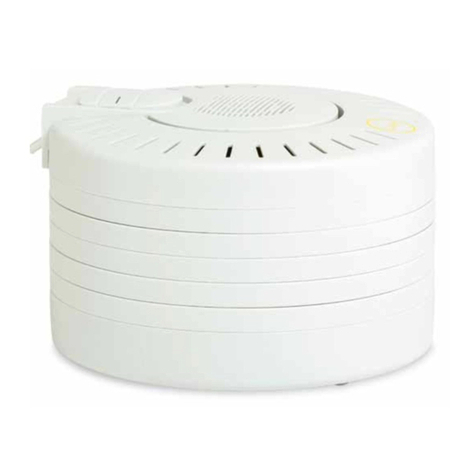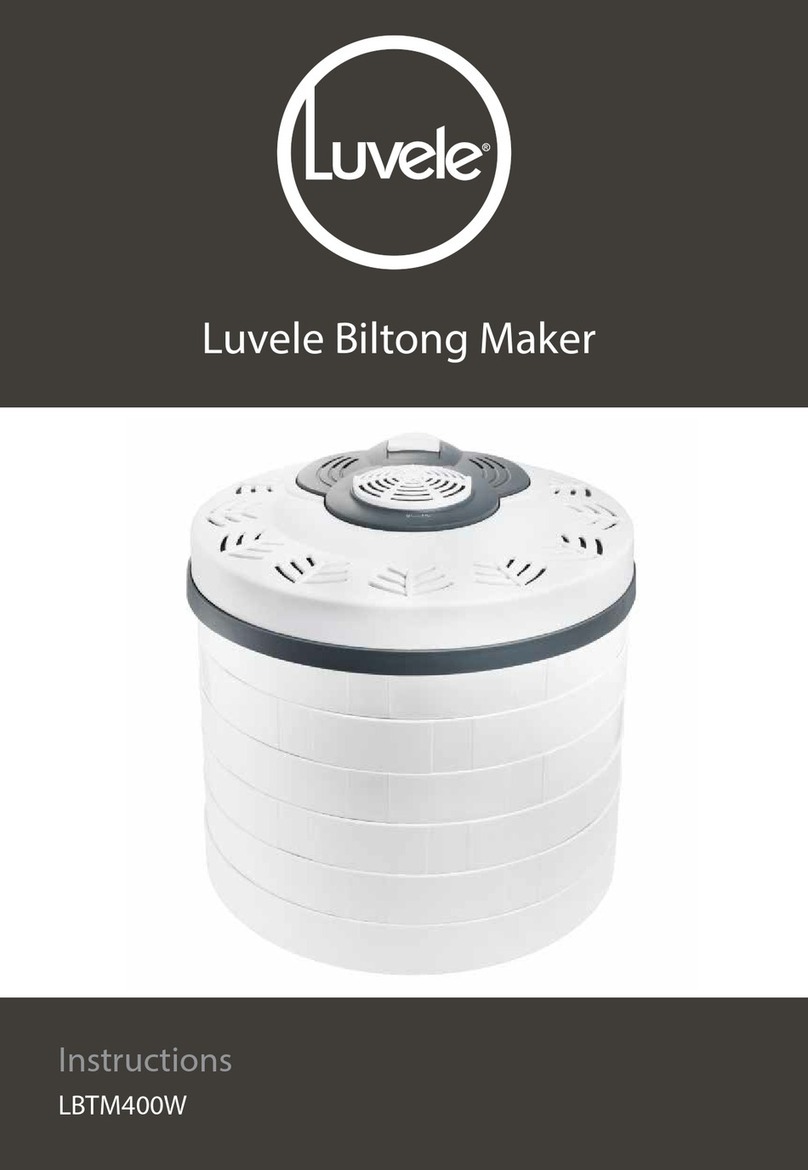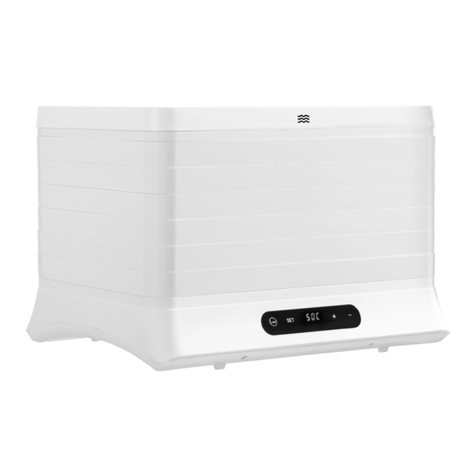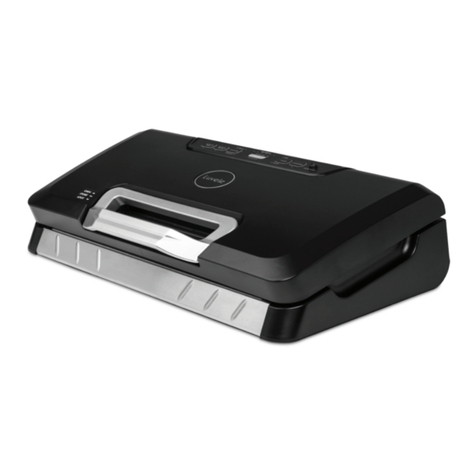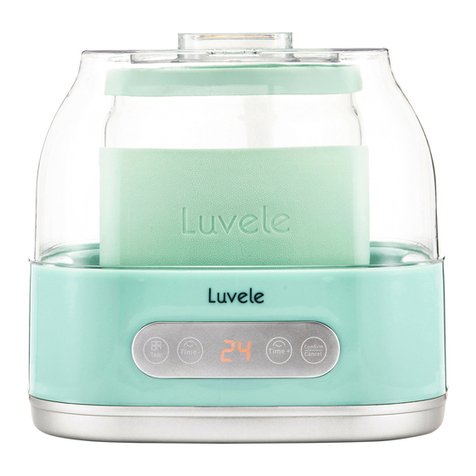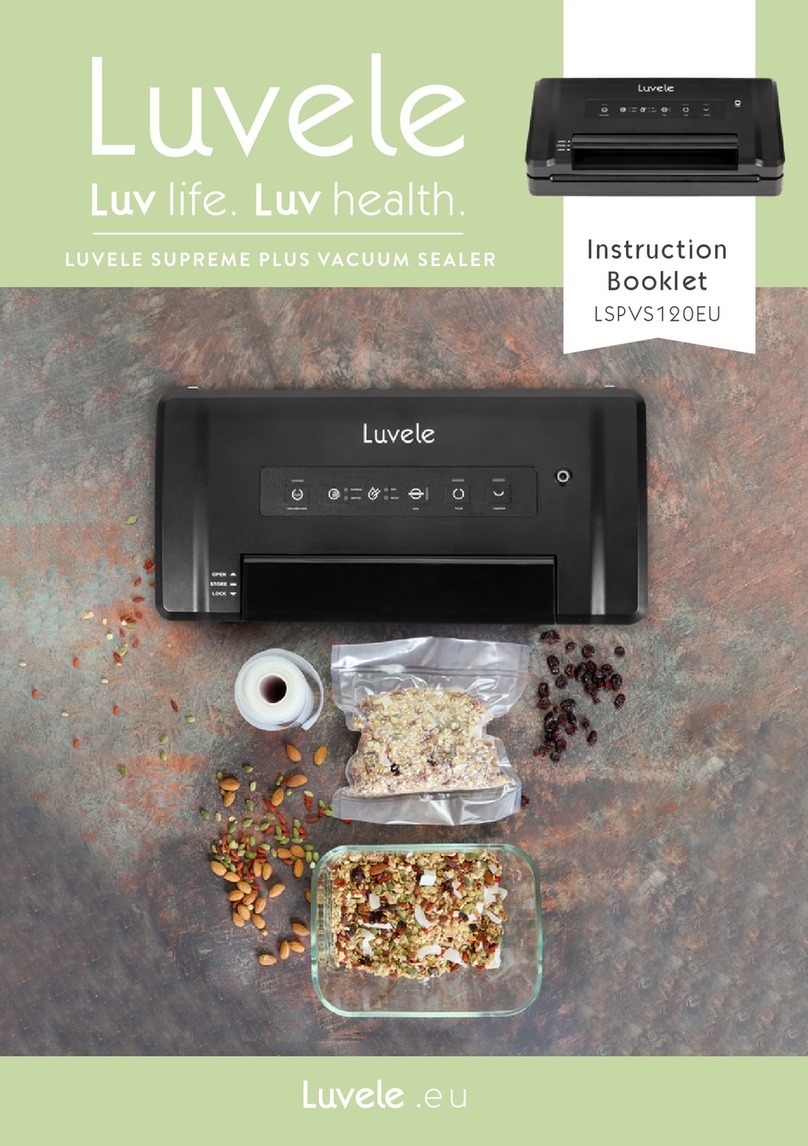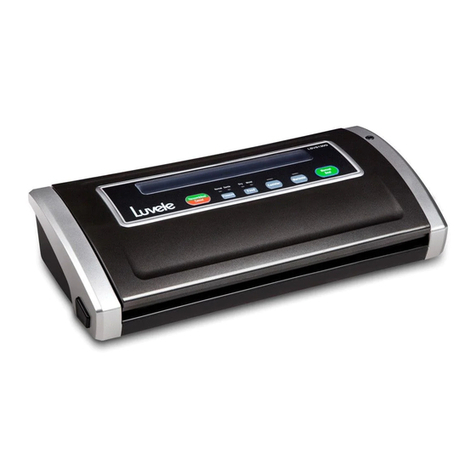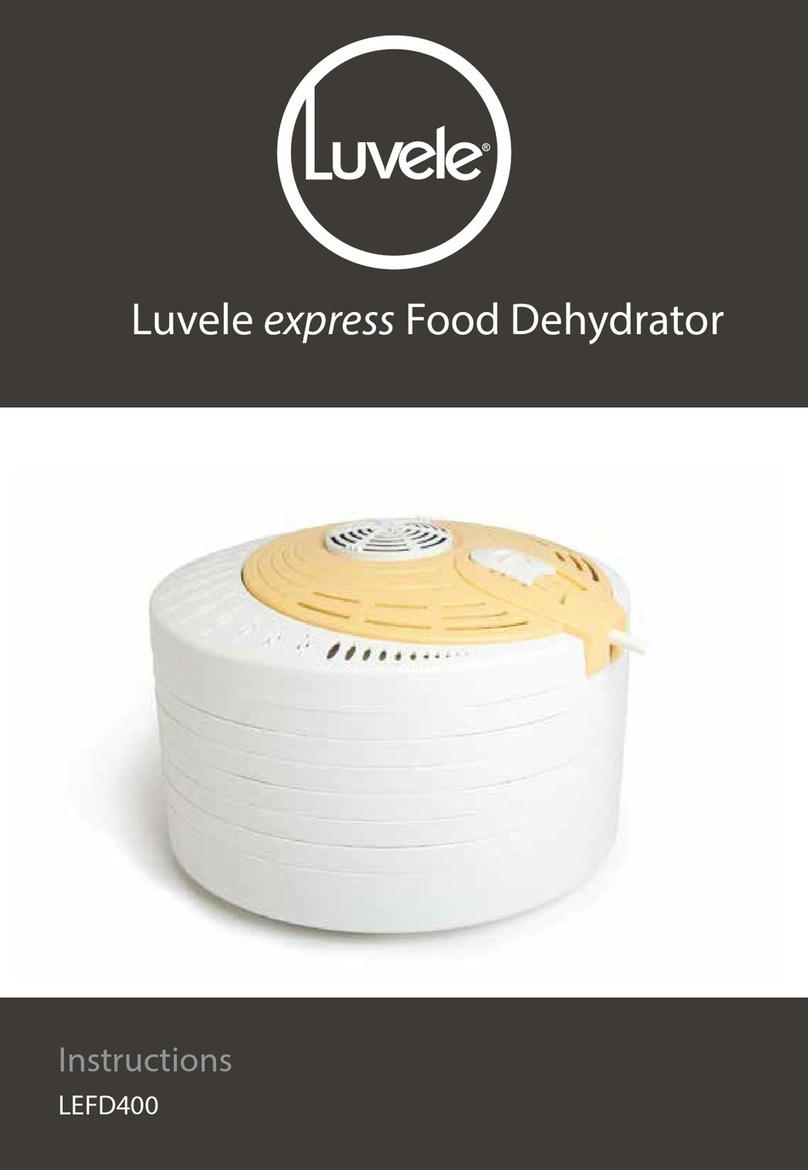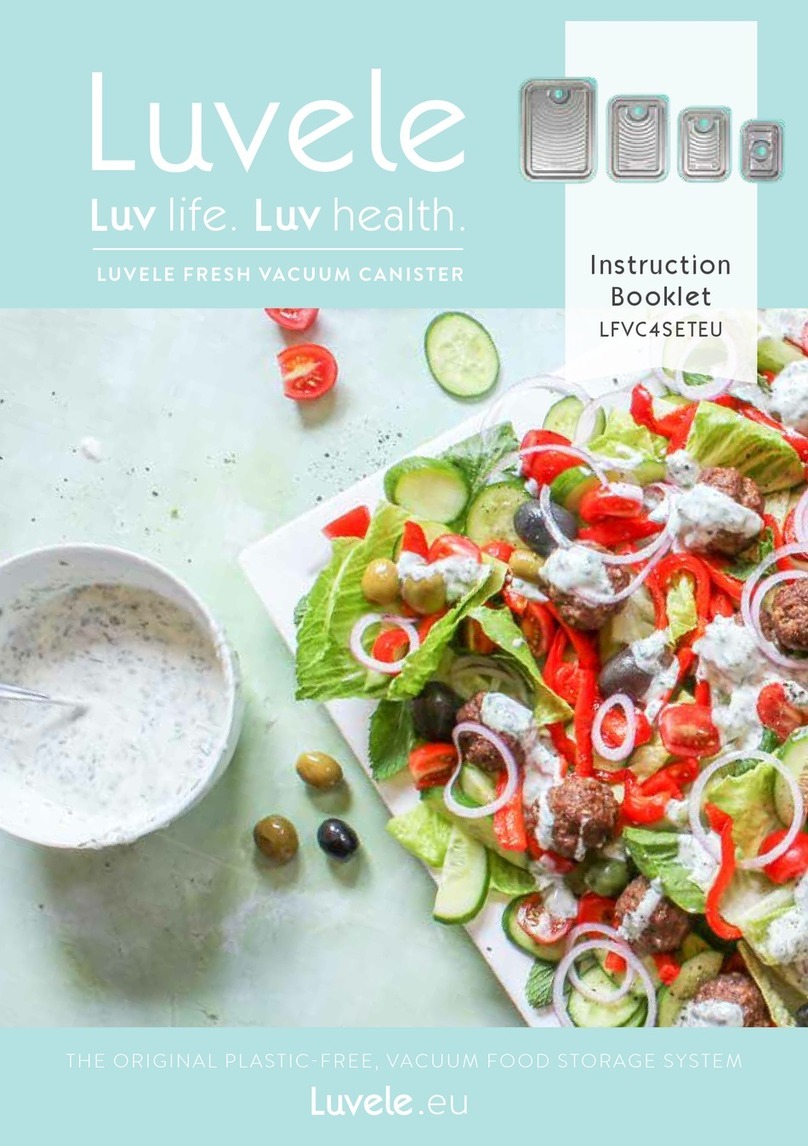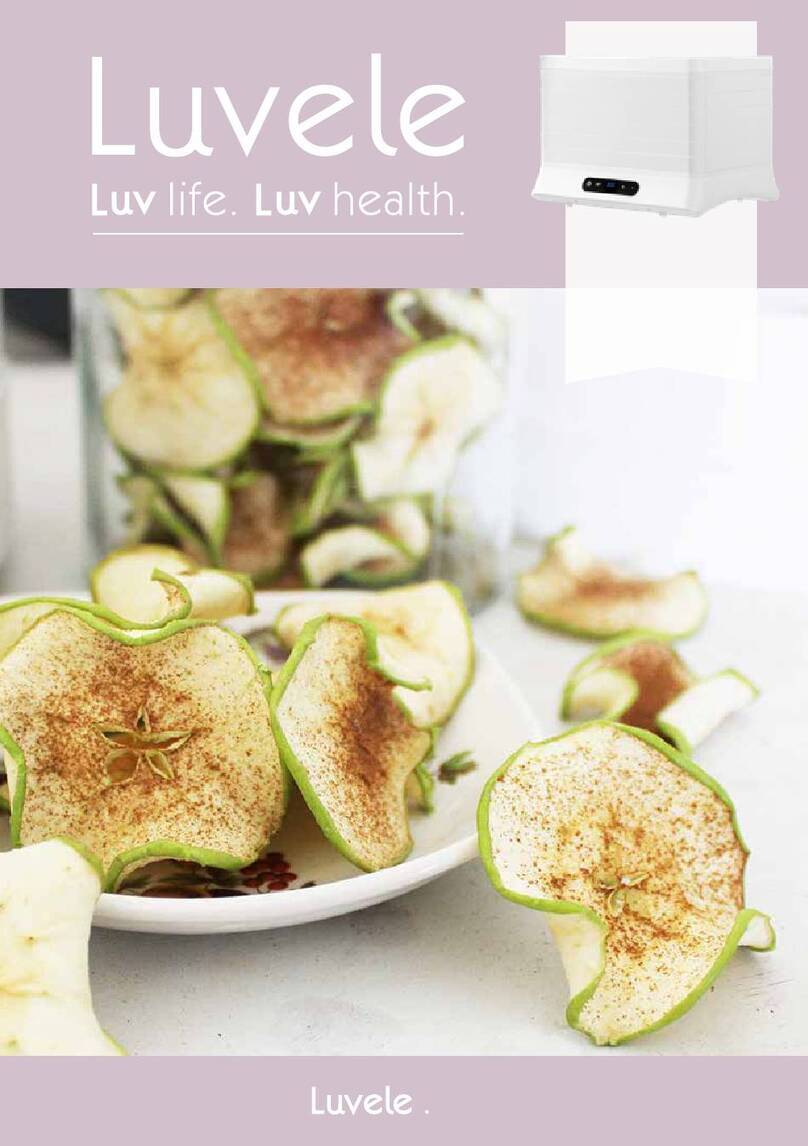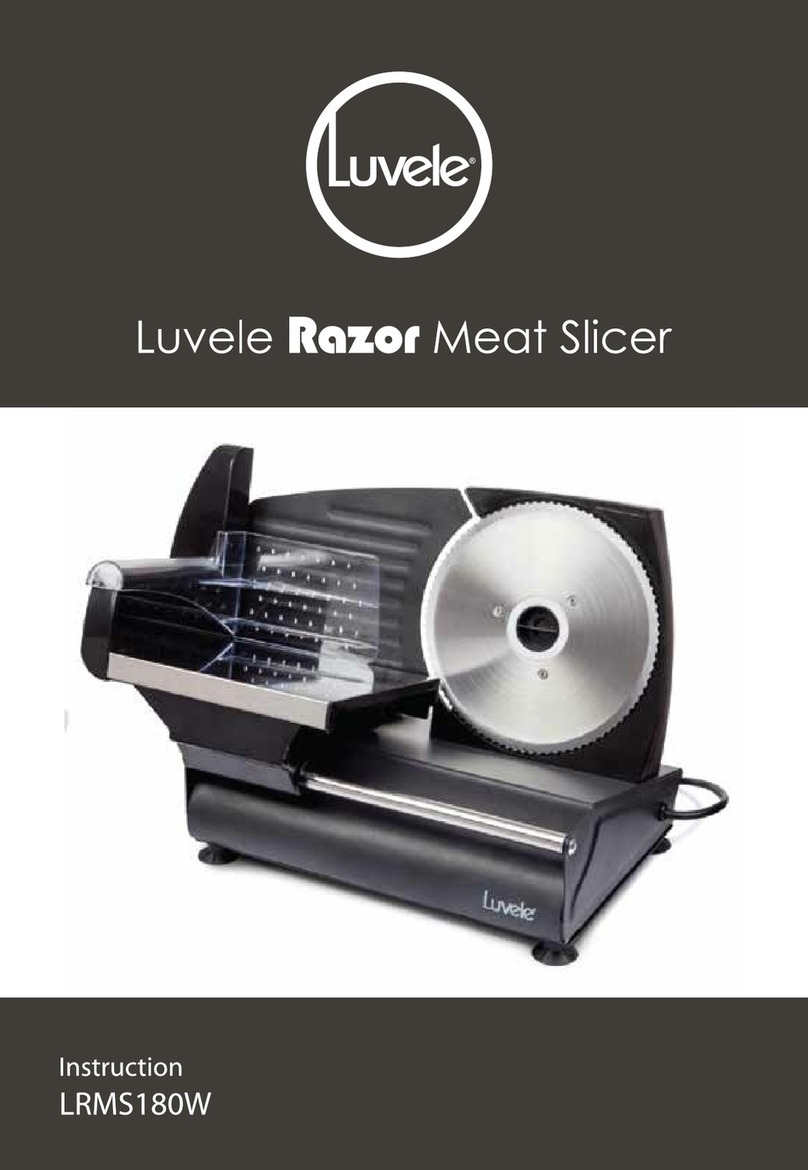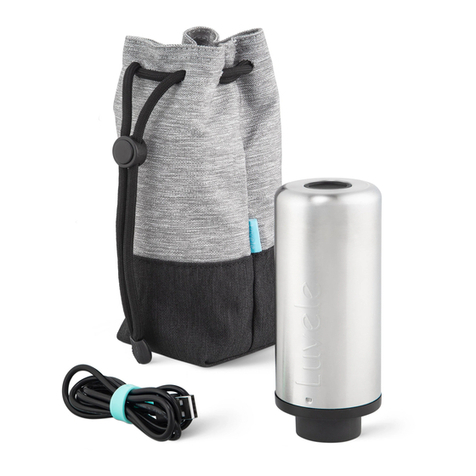
1. Put the item you wish to vacuum seal inside the bag. Use only the specially designed
Luvele vacuum bags/rolls supplied. Luvele high quality bags are designed with
channel on both sides for more consistent vacuum sealing results.
2. Leave at least 5 - 8cm between the top of the item being sealed and the seal line to allow for
bag contraction. Please note, for moist items we recommend 15cm to be left to prevent
moisture from reaching the seal area. Read Page12 for more tips on vacuum sealing liquids.
3. Straighten the open end of the bag, making sure there is no dust, liquid, wrinkles or ripples
in the bag.
4. Place the open end of the bag within the vacuum chamber area. Make sure the end of the
bag is pressed up against the two bag rests within the vacuum chamber.
5. Press the cover down on both sides using both hands until you hear two click sounds
on both the left and right side. The cover will now be secured in place. The lid may be
firm to colse the first few times of use. If needed use the plams fo your hands to press down
on the side to clip lid into place. After a few using the lid/foam gaskets will loosen up.
6. To begin the vacuum process, press the ’’VACUUM’’ button. The unit will continue to vacuum
and then automatically seal once the air has been removed from the bag. Once the LED light
has turned off, press the release buttons on both sides of the machine to release the bag.
Pulse vacuum packaging with a bag
1. The PULSE button is used when full control of the vacuuming process is required.
For example, when vacuum sealing delicate, moist and liquid items less vacuuming time is
required before the bag is sealed.
2. Alternatively, a longer vacuuming time may be required when vacuum sealing firm and hard
items. The PLUSE button gives full control over how long you vacuum an item before
pressing the seal button. The PULSE button is a unique feature from Luvele.
3. Press and hold the PULSE button and the vacuum pump turns on, release the button and it
shuts off. When the desired pressure is reached press the seal button to seal the bag.
NOTE: For the best sealing outcome, it is best to let the appliance cool down for
1 minute before using it again. Wipe out any excess liquid or food residue in the
vacuum chamber after each vacuum seal.
Do not seal one bag after another continuously to avoid overheating of the sealing element.
The machine will reject if “SEAL” button is pressed within 20 seconds of the last activation.
Your sealer can work only on the specific bags provided by Luvele. Do not attempt to use
other bags not intended for vacuum packaging. Cut the bags straight across with scissors to
open a sealed bag.
General vacuum packaging with a bag
P/7
